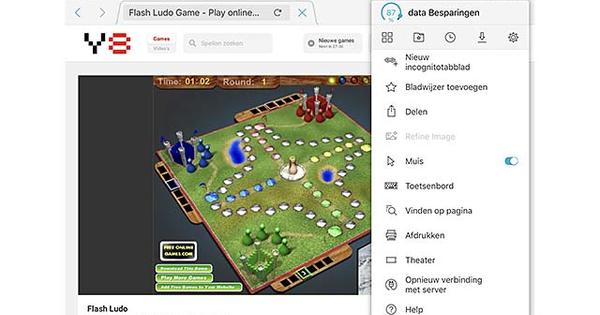The Xiaomi Redmi Note 9 Pro is the latest budget smartphone from the Chinese price fighter. The device wants to distinguish itself with great specifications for little money, but is it possible? In this Xiaomi Redmi Note 9 Pro review we take a closer look at the 250 euro phone.
Xiaomi Redmi Note 9 Pro
MSRP € 269,-Colors White, gray and green
OS Android 10 (MIUI 11)
Screen 6.67 inch LCD (2400 x 1080) 60Hz
Processor 2.3GHz octa-core (Snapdragon 720G)
RAM 6GB
Storage 64 or 128 GB (expandable)
Battery 5,020 mAh
Camera 64, 8,5 and 2 megapixels (rear), 20 megapixels (front)
Connectivity 4G (LTE), Bluetooth 5.0, Wi-Fi 5, NFC, GPS, Infrared
Format 16.6 x 7.7 x 0.9cm
Weight 209 grams
Website www.mi.com 8 Score 80
- Pros
- Nice and big screen
- Long battery life and fast charging
- Complete specifications
- Negatives
- Case screams for case
- MIUI software
- Average camera, mediocre in the dark
Xiaomi sells the Redmi Note 9 Pro in the Netherlands in two versions, with 64 GB and 128 GB storage space respectively. The device is available in grey, white and green. I tested the latter version with 128 GB of memory.
Design
The Xiaomi Redmi Note 9 Pro is made of plastic and feels solid, although the housing quickly looks dirty because of your fingerprints. At 209 grams, the device is also heavier on average, which is due to the larger battery. The housing is splash-proof, contains a 3.5mm headphone jack and a fingerprint scanner in the power button on the right side. The scanner is accurate and fast. A point of attention is that the camera module on the back protrudes best, so that the phone does not lie flat without a case and the cameras can be damaged more quickly.



Screen
The screen of the Redmi Note 9 Pro is larger than average at 6.67 inches and you notice that. For example, I cannot operate the smartphone with one hand. The large screen is ideal for two-handed typing, gaming and watching movies. Due to the full-HD resolution, the image looks sharp. The LCD panel delivers excellent colors and high brightness, but cannot match the OLED screen of a comparable Samsung smartphone. In a hole in the screen is a 16 megapixel camera that shoots 'just good' selfies.

Hardware
There is no complaining about the performance. The Snapdragon 720G processor used is smooth and works together with a generous 6 GB of RAM. That is more than average (4 GB) in this price segment. The device can handle popular games just fine, albeit at lower settings than on an iPhone or Samsung Galaxy S20.
Interesting is the 5020 mAh battery, also larger than average (3500 to 4500 mAh). The battery lasts one and a half to two and a half days and that is a nice score. Also nice is the powerful included USB-C charger, which has a capacity of 30 Watt. You can charge the battery in just under two hours. Other notable functions are the infrared sensor (to operate your TV) and an NFC chip, so that you can make contactless debit card payments in shops.
As mentioned, the storage memory of my test model is 128 GB and that will be enough for many people. Xiaomi also offers a 64 GB version, which costs 25 euros less. Looking at the small price difference, I think the 128 GB variant is the best buy. Both models also have a micro-SD card slot to expand the memory.

Xiaomi Redmi Note 9 Pro camera
There are no fewer than four camera lenses on the back of the Redmi Note 9 Pro. It is a primary camera of 64 megapixels, an 8 megapixel wide-angle lens, a 5 megapixel macro camera and a 2 megapixel depth sensor. A versatile combination that takes nice photos and videos in enough daylight. The images look sharp but could have had more realistic colors and better contrast. The photos are good enough for social media. In the dark, the camera is disappointing, even compared to the competition. The optional night mode doesn't change that much.



Software with commercials
The Redmi Note 9 Pro runs on Android 10, the latest version at the time of writing. You only notice that little, because Xiaomi's MIUI 11 shell changes the software drastically. From menus and settings to the appearance of the notification panel; actually nothing looks like the standard Android version. While Xiaomi adds some useful features – including a one-handed mode – I personally prefer a less present shell. Good to know is that the MIUI shell contains advertisements. You can specify whether these can be personalized – I wouldn't. Xiaomi can sell its smartphones for competitive prices partly thanks to advertising revenue. The MIUI software also installs many apps and games from Xiaomi and partners such as Facebook, Aliexpress and Netflix. That would have been less appealing to me.
Xiaomi's update policy is not as transparent as that of competitors like Samsung and Nokia, which is something to consider. Looking at the past few years, the brand is rolling out at least one Android update, which means that the Redmi Note 9 Pro can count on Android 11. Experience shows that Xiaomi continues to support its smartphones for years with new MIUI versions, which are not linked. are up to Android updates.

Conclusion: Buy Xiaomi Redmi Note 9 Pro?
The Xiaomi Redmi Note 9 Pro is an attractive budget smartphone with a beautiful screen, good performance and a long battery life. The biggest point of attention is the radical MIUI software, which will be a reason for some to ignore the device. If you are willing to give MIUI a chance, you can buy a device for 250 euros that you can use for years. Interesting alternatives are the Samsung Galaxy M21, Motorola Moto G8 Power, Samsung Galaxy A41 and Xiaomi Redmi Note 9.

